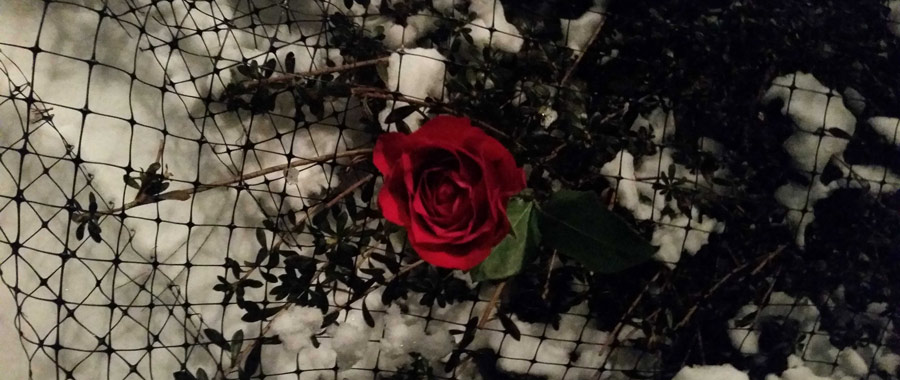In the labyrinth of existence, where tribulation often prowls inconspicuously, the Bahá’í teachings illuminate a pathway towards understanding the profound concept of “Collateral Beauty.” This notion, while reminiscent of mundane vernacular, transcends the superficial to unveil a deeper appreciation for life, particularly amidst the trials of loss and grief. In examining this intricate tapestry of human emotions, one discovers that beauty and despair are not adversaries but rather complementary forces—a duality that guides individuals toward introspection, growth, and ultimately healing.
The metaphor of “Collateral Beauty” serves as a vital touchstone within the Bahá’í framework. It suggests that there exists an undeniable beauty that accompanies even our most harrowing experiences. This concept aligns seamlessly with the Bahá’í principle of the oneness of humanity, wherein every individual is seen as intrinsically linked to a broader, cosmic narrative. When we face adversity, the lessons derived from such experiences often lead us to a more profound understanding of ourselves and our connections with others.
In the crucible of loss, whether it be the death of a loved one, the dissolution of a relationship, or other forms of deep-seated grief, individuals are frequently thrust into an abyss of emotional turbulence. Yet, within this subterranean realm, the Bahá’í teachings beckon us to seek out the silver linings that lie hidden, waiting to be unearthed. Awe-inspiring revelations often emerge from the depths of sorrow, for it is through suffering that one may glean insights otherwise obscured by the chaos of daily life.
Consider mourning, for instance. In the wake of bereavement, individuals may initially experience feelings of isolation and desolation. However, this emotional landscape can catalyze a transformation. Shared grief can forge connections among individuals, bridging gaps of misunderstanding and fostering empathy. Bahá’í teachings expound on the transformative power of collective sorrow. This is where the concept of collateral beauty becomes particularly salient, as individuals find solace and camaraderie amidst shared experiences of loss.
Furthermore, the opportunity for deepened spiritual awareness arises from the crucible of grief. Loss compels us to confront fundamental questions regarding existence, purpose, and the nature of the universe. The Bahá’í perspective posits that all experiences—joyous or painful—contribute to our spiritual evolution. This is not merely an abstract idea; rather, it is a call to recognize the duality present in every experience, thereby embracing a holistic view of life.
A poignant example of this concept is reflected in the teachings surrounding the acceptance of divine will. The Bahá’í writings articulate the significance of surrendering to the divine plan, a perspective that engenders peace even in tumultuous times. Notably, embracing this principle allows individuals to reframe their experiences. Instead of solely perceiving loss as a calamity, they can view it as a chapter in the ongoing narrative of their lives—one that fosters resilience and a deeper understanding of love.
In contemplating the intricate relationship between tests, loss, and beauty, a necessary exploration of the roles of patience and perseverance emerges. In moments of profound grief, it is easy to succumb to despair. Yet, the Bahá’í narrative encourages a stance of active engagement with our emotional landscapes. Patience emerges as a noble virtue, one that enables individuals to endure the emotional storms and find clarity amidst chaos. Such patience often leads to revelations—glimmers of collateral beauty that illuminate the path toward healing.
Moreover, community plays an essential role in navigating grief. The Bahá’í teachings underscore the importance of consultation and support systems within communal contexts. Engaging with a community fosters an environment where individuals can express their emotions candidly, thereby creating space for collective healing. The Bahá’í community upholds the idea that no individual is alone in their struggles; hence, sharing experiences amplifies the possibility of discovering the beauty hidden within the shadows.
As individuals traverse the roads of grief and loss, they might also encounter an unexpected development: personal growth. In the throes of adversity, emotional resilience burgeons, revealing strengths previously undiscovered. The Bahá’í teachings affirm that every test is a precursor to growth. Thus, contemplating our personal evolution can unveil countless threads of collateral beauty woven through the fabric of grief.
Ultimately, the narrative of collateral beauty is not about minimizing the weight of grief; rather, it invites a recognition that loss is an integral component of our shared humanity. The Bahá’í teachings encapsulate the notion that life is a multifaceted journey wherein joy and sorrow coalesce into an exquisite tapestry. This realization empowers individuals to embrace both dimensions fully, fostering a more profound appreciation of life’s complexities.
In conclusion, the Bahá’í understanding of collateral beauty stands as a compelling testament to the interplay of loss and growth. Amidst the trials and tribulations, the transformative essence of grief often unravels layers of beauty that might otherwise remain obscured. The teachings encourage individuals to delve deeply into their emotional experiences, fostering a mindset that acknowledges the radiant potential intertwined with sorrow. As one navigates the intricate pathways of life, the promise of discovering silver linings in discomfort becomes not only a hope but a guiding principle—a luminous beacon leading the way toward healing and understanding in times of darkness.
